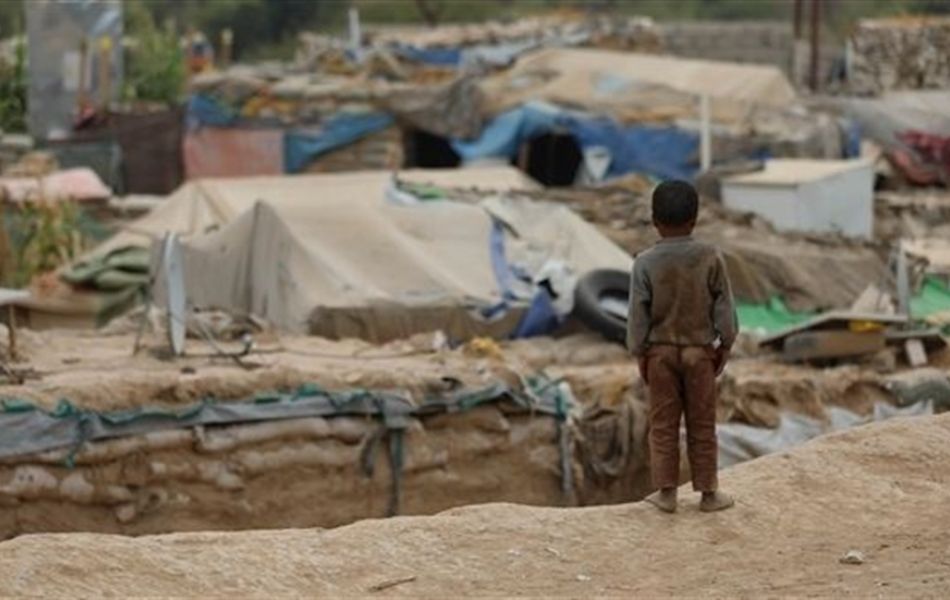
Geneva – SAM Organization for Rights and Liberties stated that the International Day for the Eradication of Poverty represents a moral and humanitarian milestone to renew commitment to social justice and human dignity, and to remind the world of its responsibility toward millions living under the weight of deprivation. The organization noted that poverty is not merely a lack of income or resources, but rather a deprivation of the right to a dignified life and a denial of access to education, healthcare, food security, housing, and work.
It further emphasized that the continuation of conflict, the decline of development, and the widening gap of inequality have turned poverty into a globalized phenomenon that transcends borders and imposes a collective duty on the international community to confront it. SAM explained that the real challenge lies in shifting from temporary relief measures to fair developmental policies that guarantee people’s rights and human worth. It stressed that eliminating poverty cannot be achieved through slogans but requires genuine political will and economic justice that places the human being at the heart of development.
On this occasion, the organization stated that Yemen stands before one of the most severe humanitarian crises worldwide; 19.5 million people are in need of assistance and protection in 2025, while the response plan targets only 10.5 million with required funding of US$2.47 billion, stressing that this funding gap leaves millions of Yemenis beyond the reach of essential protection.
SAM reported that Yemen’s first national analysis of multidimensional poverty revealed that half of Yemeni households live in multidimensional poverty, and nearly 90% of children suffer deprivation in at least one critical dimension, while more than two-thirds of children experience deprivation in two or more dimensions. The burden, it added, is heavier in rural areas, larger households, and among families whose heads have low educational attainment.
The organization explained that forecasts for July–August 2025 show that 18.1 million people are expected to face severe food insecurity (IPC Phase 3 or above) by September 2025, and that the number of districts in Emergency Phase (IPC4) may reach 165. It confirmed that 67% of households recorded inadequate food consumption in June 2025, with 44% resorting to severe coping strategies and four out of five households lacking savings.
The organization confirmed that the crippled economy, divided monetary authorities, declining revenues, and external shocks have eroded purchasing power. Per capita GDP has fallen by 58% since 2015, while inflation in government-controlled areas exceeded 30% in 2024. In 2025, the Yemeni rial experienced extreme volatility—plummeting to around 2,065 rials per US dollar before a temporary recovery in August—directly driving up food and fuel prices.
SAM pointed out that economic contraction continued through 2023–2024, with projections of further deterioration in 2025 amid the blockade on oil exports, institutional fragmentation, and declining aid. It highlighted that 17 million people face food insecurity and 18 million lack access to safe water and sanitation, while households increasingly adopt harmful coping mechanisms such as withdrawing children from school (30%) or engaging in high-risk work (22%), deepening the cycle of poverty.
The organization emphasized that the fragility of basic systems has worsened. In 2025, around 17.8 million people will remain without adequate healthcare, and 17.4 million will lack proper water and sanitation services. Meanwhile, 4.5 million children are out of school, thousands of schools are damaged, and the salaries of about 200,000 teachers have remained unpaid since 2023—raising the risks of dropout, child marriage, and child labor.
SAM confirmed that protection needs exceed 16 million people, while funding gaps remain wide—the response plan is only 21% funded as of 2025. The organization warned that continued underfunding and operational restrictions will further widen the gap in food, health, and protection assistance as well as in camp management.
The organization cited the Joint Food and Nutrition Security Monitoring Report (August 2025), which estimated that 17.1 million people faced crisis or worse levels between May and August, including 5.2 million in emergency conditions (IPC4). The report also warned that at least 41,000 people in several districts are at risk of famine-level conditions (IPC5). Moreover, 372 critical alerts were recorded across key indicators, including sharp declines in food imports and severe exchange rate volatility.
The organization called, first and foremost, for the immediate resumption of salary payments to all public servants without political discrimination, the unification of financial institutions, the reinstatement of the Central Bank’s authority, and an end to monetary duality. It also urged lifting trade and port restrictions to reduce the cost of food and medicine, combating corruption, enhancing transparency in managing revenues and aid, expanding social protection programs, and supporting supply chains for essential goods. SAM further emphasized protecting the most vulnerable groups—children, women, persons with disabilities, and displaced populations—while revitalizing agriculture and fisheries to create sustainable livelihoods. It affirmed that ending violations and achieving sustainable peace are the most effective means to break the cycle of poverty.
SAM concluded by affirming that combating poverty in Yemen is, above all, a human rights issue, not merely an economic or livelihood concern. Upholding the rights to food, health, education, and decent work requires urgent political and economic decisions, adequate funding, and the removal of barriers to humanitarian action. The organization considered the International Day for the Eradication of Poverty an occasion to reaffirm the centrality of the human being and human dignity in all public policies.